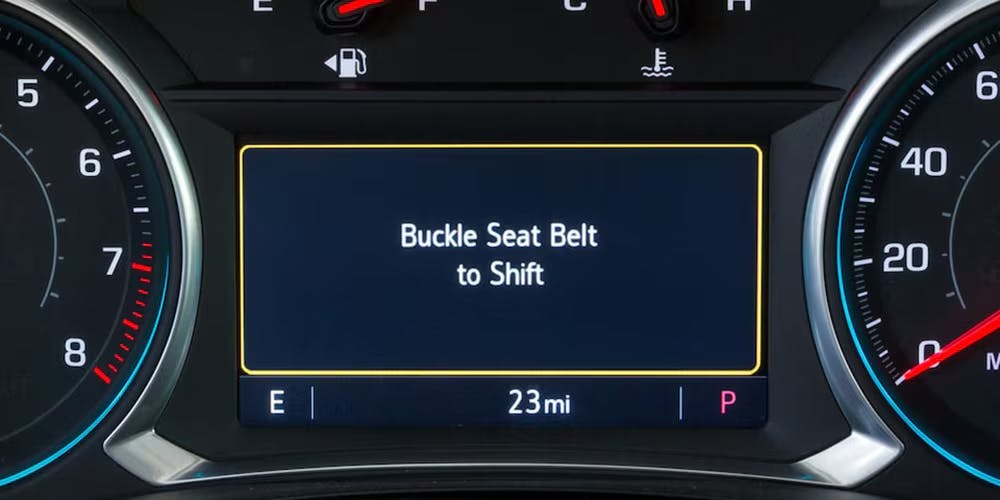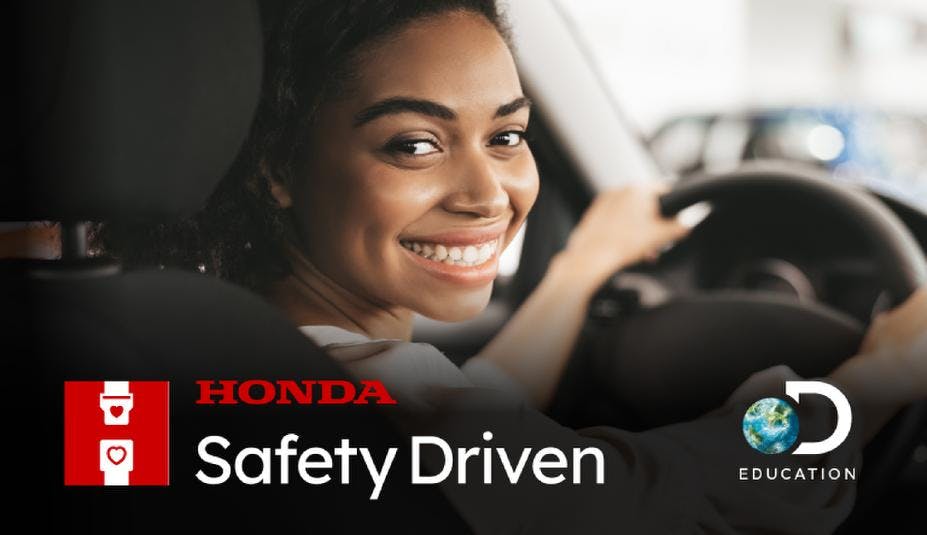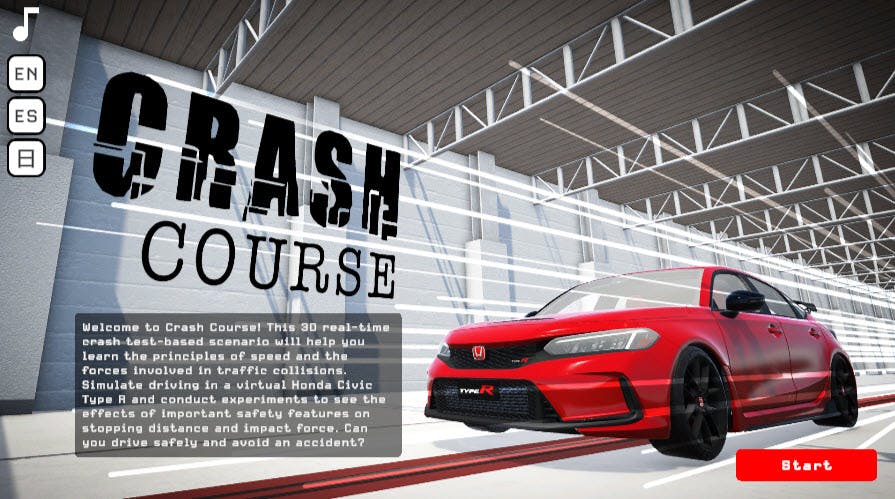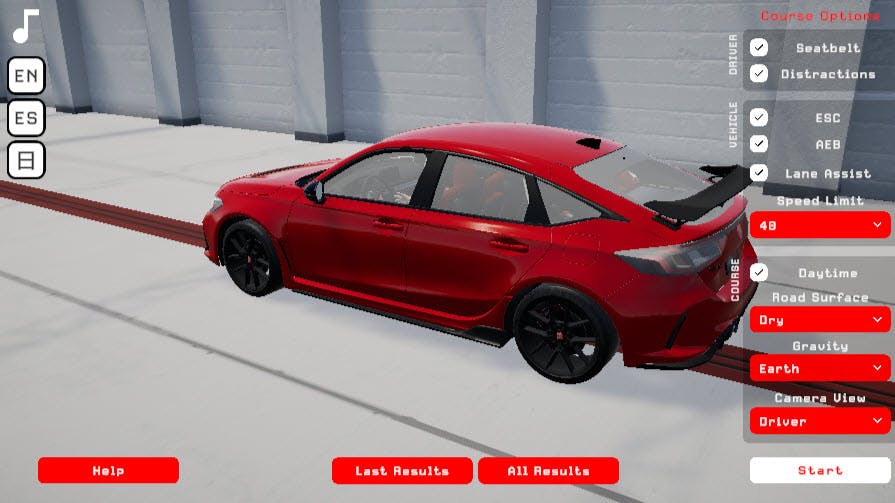Automakers Are Getting Serious About Teen Driver Safety
In a National Highway Traffic Safety Administration study in 2022 of teen driving habits, researchers learned that in that year, 811 teen drivers died in crashes, and a total of 2,514 teen drivers were involved in crashes where someone died. It’s long been a problem, and it doesn’t seem to be getting much better.
Auto manufacturers and safety foundations often used the occasion of National Teen Driver Safety Week, which ended October 26, to roll out new programs, or remind us of resources that are already out there.
Here’s a sample of what’s available:
Perhaps the most aggressive application comes from General Motors, with “Teen Driver” technology, which aims to help encourage safe driving habits.
“Teen Driver was formed upon review of data from the field, including the metrics that we know are leading causes for fatalities among teen drivers,” said Suzanne Johansson, GM’s head of child safety. “Regulating aspects of vehicle operation can help mitigate some of the distractions and risks that can adversely impact first-time and inexperienced drivers.”
With Teen Driver technology, a parent or guardian can designate one of the car’s key fobs as the Teen Driver key. “When this key is used to start the vehicle, a suite of safety features is automatically engaged and cannot be turned off,” GM says.
With the Teen key in use, the audio system or any paired device stays muted until all front-seat passengers buckle their seatbelts. In some models, “Buckle to Drive” prevents the driver from shifting out of Park until all front-seat passengers are buckled up. Parents can also set a maximum volume level for the audio system.

A speed warning can be set for any speed between 40 and 75 mph, and an 85-mph speed limiter can be enabled. On some models, the vehicle’s acceleration power can be limited when the Teen key is in use. Super Cruise driver assistance technology is blocked when the Teen key is in use, and traction control, stability control, blind-spot monitoring, and automatic emergency braking cannot be turned off.
And at the end of a teen drive is the Teen Driver Report Card. After every drive using the Teen key, a parent or guardian can access a PIN-protected readout showing the distance driven, the maximum speed the vehicle reached, and the number of times the accelerator pedal was floored. The system also shows whether safety systems like Traction Control or Stability Control were triggered.
Johansson says the Report Card gives parents and guardians the opportunity to have a discussion about safe driving habits with their teens. “Making it part of your conscious decision-making while you’re driving can help to mitigate risky behavior,” she says. “It’s a good tool to promote discussions that can help kids understand the importance of safe driving practices.”
Teen Driver comes as standard equipment on dozens of models from Chevrolet, Cadillac, Buick and GMC.

Sticking with OEMs, Honda has made safe teen driving a priority with Honda Safety Driven, a partnership with Discovery Education to help address the nearly one-third of annual traffic fatalities in the U.S. involving drivers under the age of 25. The STEM-focused educational initiative launched in October of 2023 with a “virtual field trip” for students in grades 3-12, bringing them inside Honda’s Automotive Safety Research Facility in Raymond, Ohio and the Driving Simulation Laboratory at The Ohio State University. To date, this virtual field trip has reached more than 250,000 students, and educators are expected to continue to use it each new school year as part of their evolving curriculums.
Last month, Honda Safety Driven launched two new safety education resources online and through Discovery Education’s network. The first is a new interactive crash test video game called “Crash Course” that “aims to entertain and educate students about the physics of a car crash and how different factors can affect the level of risk to passengers. Ultimately, it will give them a better understanding of how their decisions could reduce their own risk on the road.”


Second, a new “digital lesson bundle” called “Pedestrian Safety” will teach students about road safety for those not behind the wheel. The lesson bundle includes interactive content to teach students road rules and how to read signs and signals. An educator guide, presentation, family action plans, and accompanying e-bike and e-scooter safety student activity take the learning further.
“Too many young drivers die in preventable crashes every year, devastating families and communities across the U.S., and Honda continues to explore new ways to avert these tragedies,” said M.J. Foxley, Safety Strategy Leader at Honda. “Honda is targeting zero traffic fatalities involving our vehicles by the year 2050, and Honda Safety Driven puts resources in the hands of educators, students and families to create the next generation of responsible drivers and passengers.”
The Insurance Institute for Highway Safety and Consumer Reports has named “safe, affordable” vehicles for teens for 2024, ranging from a 2014-2017 Mazda 3 ($5800) to a new Lexus NX ($39,600). “It’s exciting to see crash avoidance tech like automatic emergency braking filtering through the fleet and into affordable used models, including many priced under $15,000,” said IIHS Research Scientist Rebecca Weast. “With a little knowledge and patience, families can find the right vehicle for their new driver without spending all their savings.”
There are 58 used vehicles and 22 new vehicles on the list. Of those 58 used vehicles, those with American nameplates are the GMC Terrain, Chevrolet Equinox and Ford C-Max hybrid. All 22 of the new vehicles are Japanese or Korean brands.
The lists “exclude sports cars and anything with excessive horsepower relative to its weight. Such vehicles make it too easy to speed and can tempt young drivers to take risks. The lists also have no minicars or vehicles under 2750 pounds because small, light vehicles may not provide enough protection in crashes with other vehicles.”
Of course, there’s also active instruction to help teach teens the principles of driving dynamics and how to avoid an accident in the first place.The Skip Barber Driving Academy is one such program, with half-day and full-day courses available around the U.S.



I dunno. A number like 811 sounds like a lot, but there is close to half a billion people in the US. I learned to be a good driver by first being a bad driver, not by driving a machine that makes all of the decisions for you. Is this approach really teaching responsibility?
I suspect that a lot of us have either lost a teen friend or know someone who has, but I’m a little like TG in thinking that the solutions lie more in education and experience – and understanding that bad things do happen and we can’t make them all go away. The more responsibility and setting an example we take away from parents through providing technology “controls”, the more we drive a wedge into families. At least that’s my opinion – yours may vary.
These systems work. But only if you have actively involved parents.
The feed back and data here tells the tale. But unless you have a parent willing to take the time and be involved with their child it makes little difference.
Had this been on my moms Chevelle I would have been in trouble with some of what I did at 16 years old.
The real problem today is that too few parents are able to run their own lives vs their own kids.
The old way of doing this was done by my buddies wife’s father. When they were dating she had a 455 Grand Am. Dave put a really loud exhaust on it. He was a local fire chief so he knew all the Sheriffs and they knew why it was loud.
She drove off one day and about a half mile away we heard her get on it hard. We saw him stand there and smile. He said looks like we will have a little talk when she gets back. Well she came home and he confronted her on her driving and she had no clue who told on her when it was her own car.
So we are not taking anything away from parents but providing them with a tool to use. The question is how many will really use it?
I’m a fan of the reporting system but I am not a fan of the many electronic driver controls for a driver that has no experience in snow. I feel in these cases they should learn how to drive and steer out of a skid. How to stop with out anti locks etc.
These systems have limits and we need to learn how to deal with them if you find yourself with out them or if they fail to save your hide.,
I have loved cars/motorcycles since I could say the word car. While my waiting with bated breath for the second I turned 16 was mostly so I could perform the simple act of operating a vehicle, it is an incredibly freeing feeling, to hit the road, especially if one has overbearing parents/society. 16 year old me would have driven this once around the block, dropped the keys in your smirking hand, and gone permanently to the couch. What’s the point? How will our kids ever be trustworthy if we never get close to trusting them? Here’s a plan, get involved and train your kids on how to do things! And we wonder why kids don’t drive/don’t even want a license anymore. With all this crap, you’re literally more free riding the bus!
I like your viewpoints, Chip. I personally don’t think we become better parents or solve most of the ills of our society through “software”. In fact, I blame technology in general for most of those ills in the first place!
Amen, Brother.
Better judgement only comes with experience and maturity.
Electronic distractions are the modern DWIs.
I had parents who were part of my life and learned how to drive on a rwd vehicle in the 80;s with no safety systems at all. I learned car control and also to respect the vehicle and the environment you are driving in, especially snow and rain. This might be helpful but I would argue getting rid of touchscreen everything in the cars would be more helpful.
👍
This is purely lawyer-driven to avoid lawsuits.
Gee, in 1967 we had an advanced teen driver system in Ohio: In drivers ed class, a trooper would show a 16mm film of fatal teen wrecks including all the gory details follpwed by a class discussion.. A dose of reality was quite sobering and I can still recall some of the images today. Made the point quite effectively.
Today, showing that film to the little ones would be seen as cruel and insensitive. Yet teens play video games with routine gut spilling, bloody violence. Go figure.
The BMW Car Club of America, the Porsche Club and the Sports Car Club of America all team together to present a one day class (sponsored by the Tire Rack, FCP Euro, Continental Tire and Amica Insurance) called Street Survival. Qualified volunteer instructors spend a half day with each teen who attends in the family car and a half day in a classroom. The class is held on a closed course with cones used to present a slalom that the “kids” drive through to present evasive maneuvers where the student learns to engage the ABS while making quick steering adjustments, There is a wet skid pad to teach the student what a car feels like when in a skid, and, more importantly, how to steer out of it. This school is held all over the U.S. and Canada. It costs $125 for the day which includes lunch. Parents get to watch from the sidelines and most are amazed at the skills developed in such a short time. The “kids” always give very high praise once the course is completed.
Here’s the link for the website; https://streetsurvival.org/
I took my grandkids through this and they are far better drivers having had this experience. Some of the best money I’ve ever spent!!
Chris, ditto to your insights. As a long term BMWCC member ( & PCA ) my kids attended these in our area when offered. I also invested in a similar one day course at the Jim Russel School as well. Money well spent I may add. As the open chat ( I attended the one course ) the instructor ask the class, how many are here ” before ” and how many ” after “. A minute goes by before the audience understood the real question. Then the after group got to share some Real Life examples of bad judgement. This definitely had an impact or the Before crowd. thanks for the reminder. Never Stop teaching. Cheers
I enrolled my 17 year old son into the Sports Car club of BC high performance driving school. 3 days of classroom and on track instruction. Best $400 CDN I ever spent. My son became a much better driver, and eventually we shared a car in the local racing series (Improved Production). My moment of joy was when we were driving home after the driving course and my son says ” gee dad these other drivers really don’t know what they are doing” as we drove down the freeway. Halleluja! We live in a mountainous area and I never worried about his driving after this. Spend the money save their lives and make them appreciate and love cars, safely.
I was 10 years old and living in Zimbobway Africa. My mother was a missionary for a church group and we stayed there for a year and a half on a farm. I was put in an old Datsun pickup truck and an African taught me how to drive, it was a three on the tree manual too. It didn’t take me long how to learn, things just come natural to me. My job was to go to the dairy facility load the truck with milk and distribute the loads to the villages around the farm. I did that three times a week and that was my job, everyone was to do something to help out. I also had to cut grass on a big tractor with a mower attachment out back. Times I will never forget. Back in the states I drove my dad’s car without him knowing almost every weekend until I got my driver’s license in the eighth grade. I was privileged to learn how to drive at such a young age, to feel how an automobile handles, brakes, steers, and the acceleration. No technology, just driving. That is what is wrong with cars today, distractions with touchscreens ect. I will be teaching my children how to drive on a simple manual car so they get the real feeling on how a car drives and operates. Plus to respect the car, laws and other drivers as well. It’s my responsibility as a parent to my children.